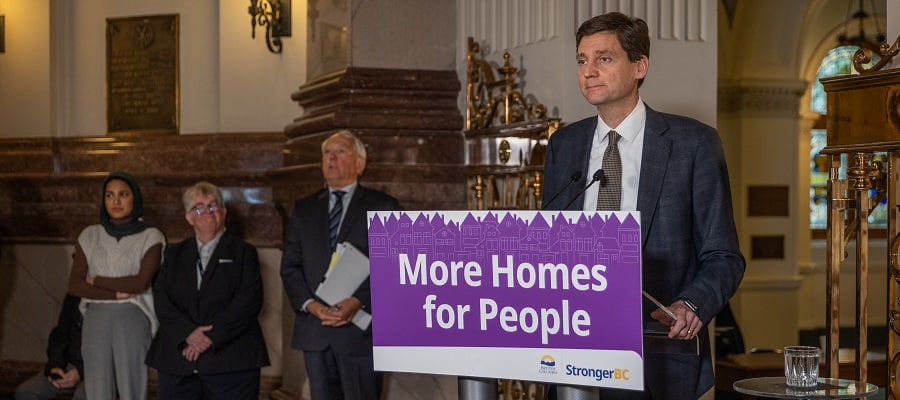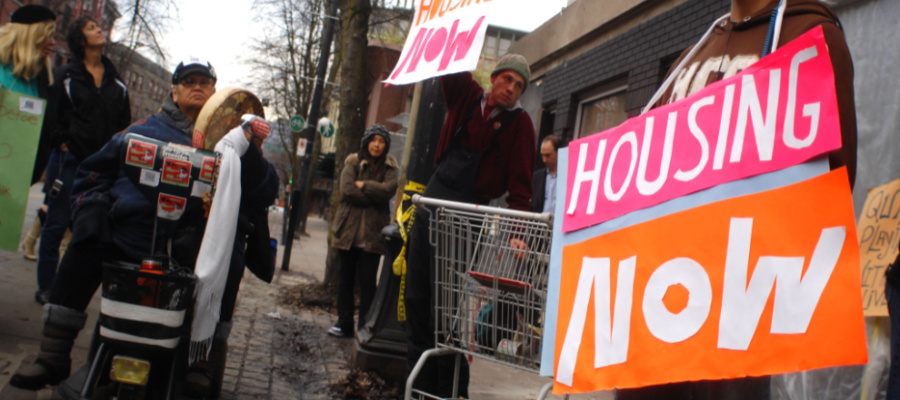BC’s Housing Supply Act could help break housing gridlock

As the housing crisis continues apace, the BC government is moving ahead with implementation of the Housing Supply Act, passed in November. This is good news because the housing shortage in this province is as severe as ever. Ultra-low vacancy rates have taken hold in the province’s most expensive regions like Vancouver and Victoria, forcing renters to vie for the same scarce apartments at sky-high rents in a competition akin to the Hunger Games.
The legislation—one component of the Eby government’s pivot on housing policy—is designed to address chronic municipal-level roadblocks to new housing, including exclusionary zoning policies and expensive multi-year rezoning and permitting processes. Under the legislation, the province will work with municipalities to assess local housing needs and create binding targets for building homes more rapidly. If cities fail to make clear progress towards meeting the targets, the province has the power to intervene directly including by approving housing projects and amending zoning bylaws.
The BC government recently announced the first cohort of 10 cities in this effort: Abbotsford, Delta, Kamloops, North Vancouver, Oak Bay, Port Moody, Saanich, Vancouver, Victoria and West Vancouver. In selecting these municipalities, the government used a range of indicators to create an index reflecting “the urgency of local housing needs, the availability of the right housing supply, including land availability and unrealized potential for more homes, and housing affordability.” Many more cities will be selected in the future including another eight to 10 of them later this year.
The province will communicate preliminary housing targets to the first 10 cities in the coming weeks and they will be finalized over the summer after a period of dialogue with those cities. According to Minister of Housing Ravi Kahlon, specific targets for below-market housing will be included.
Implementation details will be key. In particular, the housing needs assessments for each city must be ambitious. Municipalities left to their own devices have typically underestimated the need for new housing. For example, some have relied too heavily on population trends to estimate housing needs, failing to recognize that existing shortages constrain population growth and suppress household formation (for example, by forcing more young people to live with parents longer into adulthood).
The legislation does have teeth, but the province will have to show it’s willing to use them.
Six months after the targets are set, Minister Kahlon says the province will evaluate progress and step in if municipalities are not demonstrating real progress. First, this will involve appointing an independent advisor who will “review the processes of municipalities that struggle…help the provincial government better understand unique challenges of the municipality and provide recommendations for actions the municipality or the Province could take to ensure housing targets are met.” If needed, the provincial government may then begin approving important housing projects and revising zoning rules. The housing needs assessments for each city must be ambitious.
A flurry of senior governments in other countries have begun to increase their involvement in land-use decisions, including at the national level in New Zealand and at the state level in California, Washington State and Montana. In Japan land-use decisions have long been made at the national level.
As it stands, exclusionary local zoning policies in BC continue to effectively ban apartments on most residential land in our cities. This drives up the price of the scarce parcels where multi-family housing is allowed and makes the construction of new homes more difficult and expensive for public, non-profit and private rental developers alike. In a step that could partly address this, the provincial government has said it will bring forward new minimum standards for zoning in urban areas this fall. This is expected to allow three to four units on single-family lots “with additional density permitted in areas well-served by transit,” shifting the default land use to include options other than detached houses.
Here, again, the details will be crucial. Recent municipal “missing middle” housing policies in cities like Victoria and Vancouver have fallen far short of the mark. While these policies and proposals would allow buildings in previously single-family zoned areas to be divided into multiplexes, the actual additional housing floor space permitted is far too little (a paltry 16% increase in square footage in the proposed Vancouver policy, for example). The forthcoming provincial policy must avoid repeating this mistake.
In a recent report, my colleague Marc Lee set out a far more robust agenda for how to meaningfully upzone the Metro Vancouver region, which offers a range of options for missing middle housing allowing two to three times the current floor space maximums, punctuated by larger apartment buildings with higher densities. This provides a good benchmark for what should be on the table in both provincial and local upzoning policy discussions, as does another recent analysis outlining an ambitious multiplex policy. Exclusionary local zoning policies in BC continue to effectively ban apartments on most residential land in our cities.
Back home in BC, one complaint from municipalities has been about the cost of infrastructure needed alongside new housing such as sewers, water, public transportation, community centres or schools. The provincial government has signaled that more infrastructure investment will be a “carrot” provided to cities that succeed in meeting their housing targets, alongside the “sticks” described above.
Indeed, it’s important that the province step up to the plate to increase public infrastructure funding. But opposition to new housing based on infrastructure costs is misguided. When we don’t build enough new housing in our high-demand, low-vacancy centres, people still have to live somewhere. Many have to make do with overcrowded or substandard housing, while others move into outlying areas with expanding boundaries where infrastructure still has to be built but alongside low-density housing instead. Often overlooked is the fact that infrastructure to support this type of suburban sprawl development costs much more per person than infrastructure to support denser urban housing.
The housing crisis is complex and no single policy can fix it. One of the most important complementary measures the BC government can take is to massively expand investment in public and non-profit housing—a key focus of CCPA’s research agenda. Also needed are progressive taxes to help fund deeply affordable housing, tamp down on speculation and tackle huge inequalities in land wealth.
But make no mistake: the overall shortage of housing supply is an important part of the crisis and ending exclusionary zoning is critical to any ambitious public housing agenda. With robust implementation, the Housing Supply Act and broader provincial upzoning measures can play a big role.
Topics: Housing & homelessness


